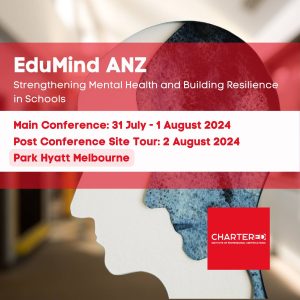Targeted and urgent action by governments is needed to manage the worsening physical mental health crisis Australian students face in the wake of the COVID-19 pandemic.
Findings from a study, conducted by the University of the Sunshine Coast (UniSC), show that, despite access to a range of existing health promotion resources in Australian schools, a lack of guidance tailored to the unique needs of young people dealing with mental and physical health issues during and after the global pandemic has left many students floundering.
To help address this critical need, UniSC Clinical Psychologist Dr Alex Metse and Dr Lynette Vernon from Edith Cowan University have helped create an International Framework for School Health Promotion, driven by chief investigator and lead author, Dr Joseph Scott.
Even before the impact of COVID-19, Dr Scott said the increase of sedentary behaviours and too much screen time were significant issues facing Australian students.
Since the shift away from lockdowns has seen students return to school grounds, the effect of poor eating and sleeping habits, as well as reduced exercise routines, quickly became clear.
“The COVID19 pandemic has significantly disrupted the normal healthy routines of young people, causing significant reductions in physical activity levels, increases in sedentary behaviour, increases in social media usage and screentime,” Dr Scott told EducationDaily. “Among a number of factors, these changes have likely negatively affected sleep quality.”
Alarmingly, Dr Scott says, a recent global review of studies focusing on how the COVID-19 pandemic affected sleep among children and adolescents found that sleep quality had reduced by 27 per cent (Sharma, 2021).
Collaboration between schools, parents and teachers is important
The impact of worldwide restrictions has created an educational and health crisis for students that, Dr Scott said, “is not just going to go away on its own”.
School principals, teachers and parents, said Dr Scott, are “an important piece of the puzzle”.
“Schools have been recognised by the World Health Organisation (WHO) and UNESCO, globally, as strategic vehicles that are uniquely placed to promote health and are an important space for the development of healthy lifestyle behaviours and lifelong skills,” Dr Scott told EducationDaily. “We would encourage schools to utilise the framework we have developed map and analyse existing school health programs across the classroom, school and community levels, assessing their strengths and weaknesses to look at ways to innovate strategies to enable young people to thrive.”
School health promotion programs, Dr Scott says, should address the inter-connectedness between multiple risk behaviours, including physical activity, sleep, nutrition and mental health and focus on social and emotional learning.
“Our research indicates that the key to supporting young people is empowering them to develop the knowledge and skills enhance and maintain their own physical and mental health and well-being,” he says. “We would encourage schools to regularly evaluate the programs using the framework to ensure ongoing health and educational support for young people.”
The framework’s four key strategies are:
- Focus on social and emotional learning
A key emphasis is placed on empowering children and adolescents to improve their own physical and mental health and well-being. - School health programs address multiple health risk behaviours
It recommends schools and teachers prioritise curriculum and education on physical activity, sleep, nutrition and mental health. - Schools serve as health promoters
The framework is designed to be used as a tool for educators to evaluate existing school programs and strengthen connections with parents and community to bolster internal and external support for young people. - Provision of support for school leaders and teachers
Teachers and principals face additional pressures from the pandemic. Collaboration is needed between various government and community sectors to support them to deal with its complex systematic impacts.








